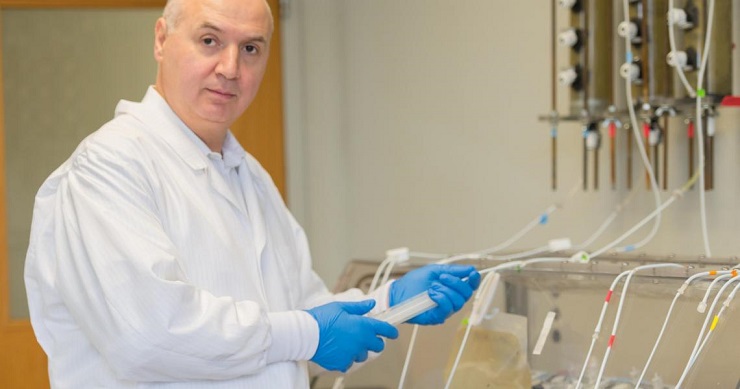More than seven years after the Deepwater Horizon drilling rig exploded, sending up to 900,000 tons of oil and natural gas into the Gulf of Mexico, there are lingering questions about the safety and effectiveness of a key element of the emergency response: injecting chemicals a mile below the ocean surface to break up oil spewing from the ruptured sub-sea wellhead to prevent them from reaching environmentally sensitive regions.
To date, spill cleanups have focused primarily on removing or dispersing oil on the ocean surface and shoreline, habitats deemed more important ecologically. Knowledge of the deep ocean is in general far murkier, and at the time of the accident, BP's drilling operation was the deepest in the world.
In a groundbreaking study published today in the Proceedings of the National Academy of Sciences, collaborators from the Woods Hole Oceanographic Institution, New Jersey Institute of Technology, Texas A&M University and the Swiss Federal Institute of Aquatic Science and Technology pooled their scientific and technical expertise to provide some of the first answers to these controversial policy questions.
The team began by developing physical models and supercomputer simulations to determine the course the oil and gas took following the eruption, including the fraction of larger, more buoyant droplets that floated to the surface and the amount of smaller droplets entrapped deep below it due to sea stratification and currents.
Michel Boufadel, director of NJIT's Center for Natural Resources Development and Protection (NRDP) and Lin Zhao, a post-doctoral fellow at the center, developed a model to predict the size of droplets and gas bubbles emanating from the wellhead during the sub-surface blowout. They factored water pressure, temperature and oil properties into the model, and then employed it to analyze the effects of the injected dispersants on this stream. Researchers at Texas A&M in turn created a model to study the movement of pollutants away from the wellhead.
The researchers determined that the use of dispersants had a substantial impact on air quality in the region of the spill by reducing the amount of toxic compounds such as benzene that reached the surface of the ocean, thus protecting emergency workers on the scene from the full brunt of the pollution.
"Government and industry responders were faced with an oil spill of unprecedented size and sea depth, pitting them in a high-stakes battle against big unknowns," Christopher Reddy, a senior scientist at Woods Hole Oceanographic Institution, and Samuel Arey, a senior researcher at the Swiss Federal Institute of Aquatic Science and Technology, wrote in Oceanus magazine.
"Environmental risks posed by deep-sea petroleum releases are difficult to predict and assess due to the lack of prior investigations," Boufadel noted. "There is also a larger debate about the impact of chemical dispersants. There is a school of thought that says all of the oil should be removed mechanically."
Boufadel added that the water-soluble and volatile compounds that did not reach the surface were entrapped in a water mass that formed a stable intrusion at 900 to 1,300 meters below the surface.
"These predictions depend on local weather conditions that can vary from day to day. However, we predict that clean-up delays would have been much more frequent if subsurface dispersant injection had not been applied," Reddy and Arey said, adding, "But this is not the final say on the usage of dispersants."
